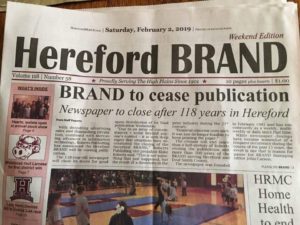I guess none of us should be surprised to hear this bit of news from near the very top of the U.S. military chain of command.
Army Gen. Joseph Votel, commanding officer of the nation’s Central Command — which has authority over deployment of personnel in the Middle East — told Congress that Donald Trump didn’t consult with him before announcing his decision to withdraw our forces from Syria.
The president, though, did declare the Islamic State to be “defeated badly,” which was his seat-of-the-pants justification for leaving Syria and turning the fight over to . . . Syrian resistance forces.
The non-surprise comes in the form of those idiotic 2016 presidential campaign boasts that Trump made. He told us he was the smartest man in human history, that he knew the “best words,” had the “best mind,” would surround himself with the “best people” and, here’s my favorite, how he knows “more about ISIS than the generals do, believe me.”
The tragedy of it is that the Republican presidential candidate persuaded just enough voters living in just the right states to score an Electoral College victory to be elected the 45th president of the United States.
So he now gets to govern without consulting the “best people” who ought to include Gen. Votel, a combat Army veteran with vast knowledge of the Islamic State and the threat it still poses in the region and around the world.
According to Time.com: When Trump announced his decision to pullout on Dec. 19, it sent shock waves through Washington and the rest of the world. “Our boys, our young women, our men, they’re all coming back and they’re coming back now. We won.”
But did we? ISIS has claimed responsibility for terror attacks after the announcement, suggesting to many of us that the Sunni Muslim terror outfit isn’t “defeated.”
However, Donald Trump is wired to be all-knowing all the time, or so he would have us believe.
Except that I don’t believe a single word that flies out of his mouth.










